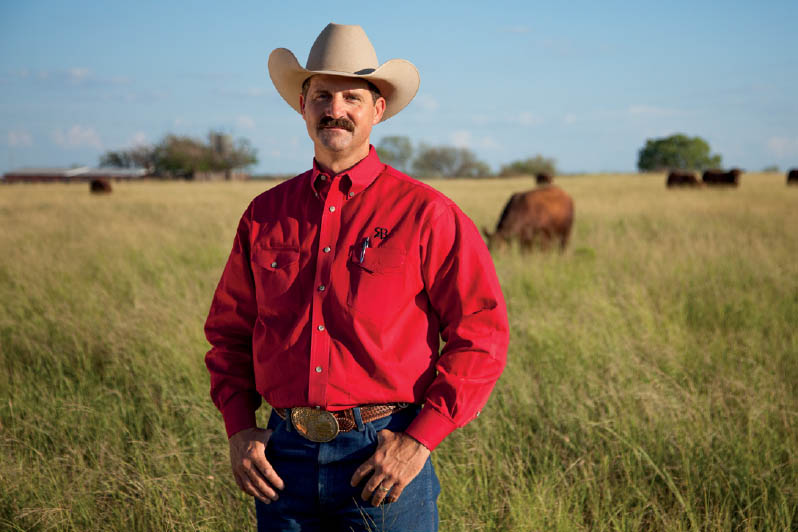32. WATCH WHAT YOU CUT OFF
![]()
GETTING A FEEL for how you frame your subject and how much of the subject to cut out of the frame is just as much about strategic composition as it is making the subject look like they feel comfortable to the viewer. Sometimes the frame—the four lines making up the visual space of the portrait—can be a distracting factor based on where they are placed in relation to your subject.
There’s no arguing that we use the frame to cut out small or large portions of our subject based on the type of shot we want to achieve. However, one of the most common mistakes I see students and new photographers make is cutting off too little of the subject for the framing to feel comfortable. Although this sounds fairly picky, many portraits cut such small portions of the subject off that the viewer might be distracted by where the placement of the frame is rather than spending time looking at the subject. It’s something to keep in mind when framing up your subject.
A common example of this is seen in portraits where the sides of the subject’s arms are cut off by the sides of the frame. Cutting off just the slightest amount of her arms creates an uneasy visual tension at the edge of the frame that may detract from the subject. The viewer’s eye can’t help being pulled to this point where the body leaves the frame. The same thing happens when cutting off even the slightest amount of the top of the head, fingers, feet, and the like.
So, how do we solve this visual stressor? The solution is simpler than you might think: back out or zoom out from your subject, adding space between the subject and the frame (Figure 32.1 and Figure 32.2). Many times, portraits are framed in a way that has an arm just barely touching the edge of the frame. Relieve this visual stressor by simply giving the subject more room to breathe, which simply means adding some space. Again, don’t give the viewer an easy, distracting reason to look at a much less important part of the frame than the subject. Likewise, framing your subject too tightly against the edges of the frame places a part of them in the “bleed” of an image if it were to ever run in a magazine or other publication. The bleed is an area of tolerance we give the printer when physically cutting the paper. Sometimes the cut is exactly where it needs to be, but sometimes it chops off more than you’d want as a photographer and you lose the arm (or top of head, or bottom of feet, etc.).
32.1 The bottom frame cutting just a slight bit of the subject’s arms out of the frame creates unnecessary visual tension on the viewer, especially given that her head is completely in the frame opposite her arms.
ISO 250; 1/50 sec.; f/4; 65mm
32.2 Zooming out 15mm allowed the arms completely into the frame, mitigating the visual tension they created previously, and the environmental portrait’s context did not change.
ISO 250; 1/50 sec.; f/4; 50mm
Lastly, it’s useful to know what portrait photography has deemed avoidable when using the edges of the frame to minimize the amount of your subject shown in an image. The rule is fairly easy to remember: don’t cut the subject off at joints. This means that using the frame to cut the subject off at the neck, elbows, waist, knees, and ankles isn’t a great idea. Instead, reframe the subject to where the edges cut him off across the upper part of the chest, above the waist but below the elbows, just above or below the knees, or well below the feet (Figure 32.3 and Figure 32.4). Again, we are conditioned to see the subject as an entire person, and although we need to cut portions of the subject out of the frame to create a particular look or type of portrait, we don’t want to place any undue stress on the viewer in visualizing the subject. Additionally, cutting parts of fingers off can also be distracting, especially in those medium shots of your subject crossing their arms.
I’ll be the first to say that it’s sometimes difficult to keep from violating these rules. At the same time, though, I’m always conscious of what my framing of the subject does, both technically and as part of the overall image. Always check the edges of your frame. Take a break from looking through the viewfinder and review your images every so often during a shoot. Do your best to mitigate cutting too little of the subject out of the frame before you get to the editing process.
32.3 Visual tension is created where the image’s frame cuts through the subject’s knuckles.
ISO 100; 1/500 sec.; f/2.8; 120mm
32.4 Bringing the hands completely into the frame reduces any minor visual tension their being cut off created. Although hard to notice initially, this fix quietly makes the image more effective and balanced.
ISO 100; 1/250 sec.; f/2.8; 155mm
Compose to Make Your Subject Look Their Best
My good friend and colleague R.J. Hinkle suggests that you never use the frame to cut the subject off wherever his form gets wider. This mostly refers to the top of and midway down the waist, where everyone, no matter his or her overall size, is a bit wider based on human anatomy. Doing so offers the perception that the subject is larger than they appear, and for a good majority of portraiture, this is typically unwanted.
Instead, R.J. recommends moving the edge of the frame below or above the wider parts of the subject’s form (Figure 32.5 and Figure 32.6). This very well might change the overall framing of the subject, but it is necessary to avoid an unflattering look and possibly a few complaints upon image delivery.
32.5 Cutting the subject out of the frame just above his midsection leaves him looking potentially larger than in reality.
ISO 100; 1/800 sec.; f/4; 73mm
32.6 Zooming out to where the bottom of the frame is below the belt line provides the viewer a better understanding of how the subject looks, and it mitigates any troublesome issues with his overall size.
ISO 100; 1/1000 sec.; f/4; 60mm






